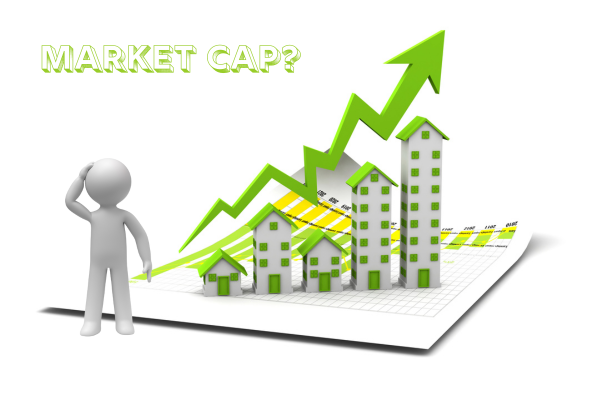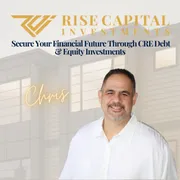Rise Capitals Articles To Educate And Inspire

Cap Rate in Commercial Real Estate Investments
"In investing, what is comfortable is rarely profitable." - Robert Arnott
Capitalization Rate, commonly referred to as Cap Rate, is a crucial concept for anyone looking to invest in commercial real estate. However, it can be somewhat complex for newcomers. In this article, we'll simplify this term, explain its importance, and give you some practical examples to understand how it's used.

What is Cap Rate?
Cap Rate is essentially a ratio that helps investors evaluate the risk and potential return on an investment property. It's calculated by taking the Net Operating Income (NOI) of a property and dividing it by the property's current market value or acquisition cost.
Simple Cap Rate Formula:
Cap Rate=Net Operating Income (NOI)Current Market Value or Cost of Acquisition Cap Rate=Current Market Value or Cost of Acquisition Net Operating Income (NOI)
How Cap Rate Ties into Commercial Real Estate Investments?
Let's say you are considering buying an office building priced at $1 million, and it generates an NOI of $80,000 per year. The Cap Rate would be:
Cap Rate=80,0001,000,000×100=8Cap Rate=1,000,00080,000×100=8
An 8% Cap Rate means you would get an 8% return on your investment if you paid all cash and the NOI remained constant.
Calculating the Proforma
When you're planning to invest in an asset, a proforma is your projection of future financial performance. You would use the Cap Rate to calculate the estimated value of the property based on its expected NOI.
For example, if you project the NOI to be $90,000 next year and apply the same 8% Cap Rate, you'd estimate the property to be worth $1,125,000.
Different Types of Cap Rates
Acquisition Cap Rate
This is the Cap Rate at the time you acquire the property. You use it to determine how much you are willing to pay for a potential investment.
Going-In Cap Rate
The going-in cap rate refers to the initial capitalization rate at the time of purchasing a property. It is calculated by taking the property's projected first-year Net Operating Income (NOI) and dividing it by the acquisition cost.
Market Cap Rate
Market Cap Rate gives you an average rate at which similar properties in the same area have sold. This rate is derived by looking at comparable assets, their NOI, and the price they recently sold for.
For instance, if two similar office buildings in the same area sold for $1 million and $1.1 million with NOIs of $75,000 and $85,000 respectively, the average market Cap Rate would be around 7.6% [(75,000/1,000,000 x 100) and (85,000/1,100,000 x 100)].
Terminal or Disposition Cap Rate
This is the expected Cap Rate at the time you plan to sell the property. It's vital for your proforma as it helps project your selling price.
Market Cap Rate Expansion vs Contraction
Market cap rate expansion means that the market capitalization rate is increasing, which generally signifies that perceived risks are higher or expected returns are lower. In this scenario, the value of a property typically decreases, as investors are looking for higher returns to compensate for the increased risk. Conversely, market cap rate contraction implies that the market cap rate is decreasing, often because the market perceives less risk or is satisfied with lower returns. A contracting cap rate usually leads to an increase in property values, as investors are willing to pay more for the same level of income.

Cap Rate Scenarios in Proforma
Lower Disposition Cap Rate vs. Market Cap Rate
If the disposition Cap Rate is lower than the market Cap Rate at the time of acquisition, it typically means the market is improving, and you might be able to sell the property at a higher price.
Cap Rate Expansion
Cap Rate expansion means the Cap Rate is expected to increase over the investment period. This usually indicates a more conservative proforma, as a higher Cap Rate in the future would lower the property's value, offering less upside when selling.
The Role of Cap Rate in Risk Assessment
Cap Rate isn't just a number; it's a reflection of how the market perceives the risk and reward of a particular property. As mentioned earlier, a higher Cap Rate usually indicates a higher perceived risk but offers a higher potential return. Conversely, a lower Cap Rate suggests lower perceived risk, usually accompanied by a higher purchase price.
Cap Rate and Asset Specifics
However, these are general guidelines, and it's crucial to consider the unique characteristics of the asset you're evaluating. For example, a property might offer a high Cap Rate because it requires significant renovation or "lift" to bring it up to market standards and realize its projected Net Operating Income (NOI). The high Cap Rate here would signal not just a higher potential return, but also a greater amount of effort, time, and investment needed to achieve that return.
Case in Point: High Cap Rate, High Lift
Let's say a property has a Cap Rate of 12%. At first glance, this might seem like an excellent opportunity for substantial returns. However, if achieving the projected NOI requires extensive renovations, zoning approvals, or other risky endeavors, then the high Cap Rate may be deceptive. It’s not just a high return you’re looking at, but also a high risk and high investment of time and resources.
Case in Point: Low Cap Rate, Low Lift
On the other hand, a property with a low Cap Rate—say, 5%—could indicate a stable, lower-risk investment. But it’s also likely to come at a higher initial purchase price. This might be because the property is in a prime location or has high-quality tenants, reducing the risk and effort required to achieve the projected NOI.
Weighing Risks and Rewards
Therefore, when looking at Cap Rate, always ask yourself how much "lift," or improvement, is needed to meet your financial goals for the property. Are the higher potential returns worth the additional risks and investments? Or would a lower-risk, lower-return property better align with your investment strategy?
The Influence of Institutional Capital on Real Estate Cap Rates
Institutional capital refers to the financial investments made by large entities such as pension funds, insurance companies, and mutual funds. When institutional capital starts flowing into specific real estate asset classes, it can have a pronounced impact on the capitalization rates (cap rates) of those assets. Here's how:
Cap Rate Compression
Higher Demand: Institutional investors increase demand, driving up property prices.
Lowered Risk Perception: Their involvement often lowers the perceived risk of the asset, further reducing cap rates.
Quality Improvements: These investors often upgrade properties, making them more attractive and further compressing cap rates.
Impact on Other Asset Classes: Potentially Valuable Opportunities
Opportunity for Higher Yields: As institutional capital focuses on certain asset classes, others may offer higher yields due to less competition.
Arbitrage Potential: Savvy investors might see this as an opportunity, anticipating that these asset classes will also attract institutional capital in the future.
Comparative Appeal: The yield gap between favored and unfavored asset classes could eventually redirect capital, affecting their cap rates.
Conclusion
Understanding the various types of Cap Rates and their roles in your investment proforma can make or break your commercial real estate investment. By effectively using these metrics, you can evaluate both the current and future potential of a property, ensuring a more informed investment decision.
If you're concerned about your financial future, investing in commercial real estate can be a lucrative option—especially if you understand the ins and outs of Cap Rate.
By incorporating the asset's unique characteristics into your risk-reward analysis, you get a more nuanced, accurate picture, allowing for smarter investment decisions.

